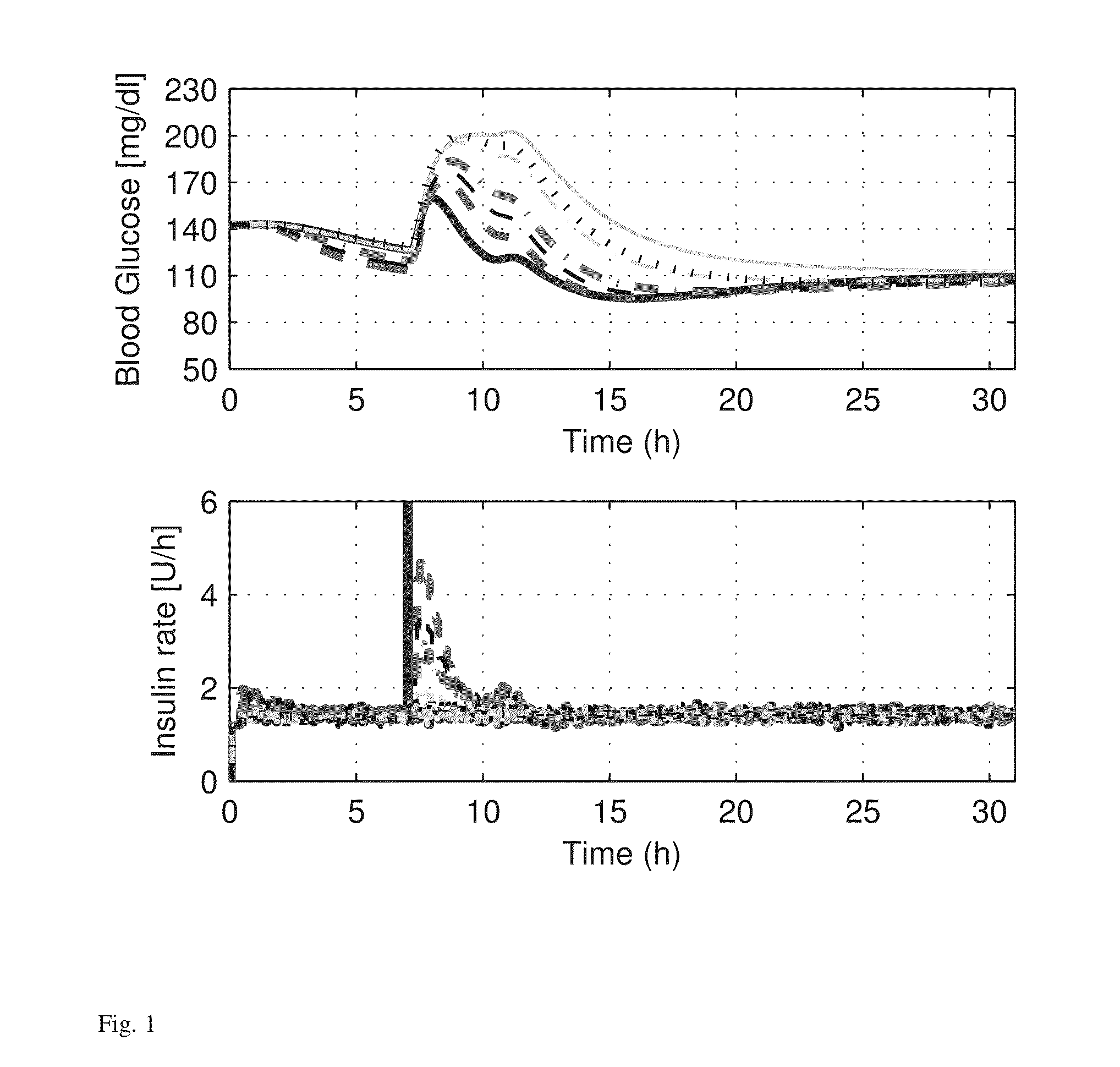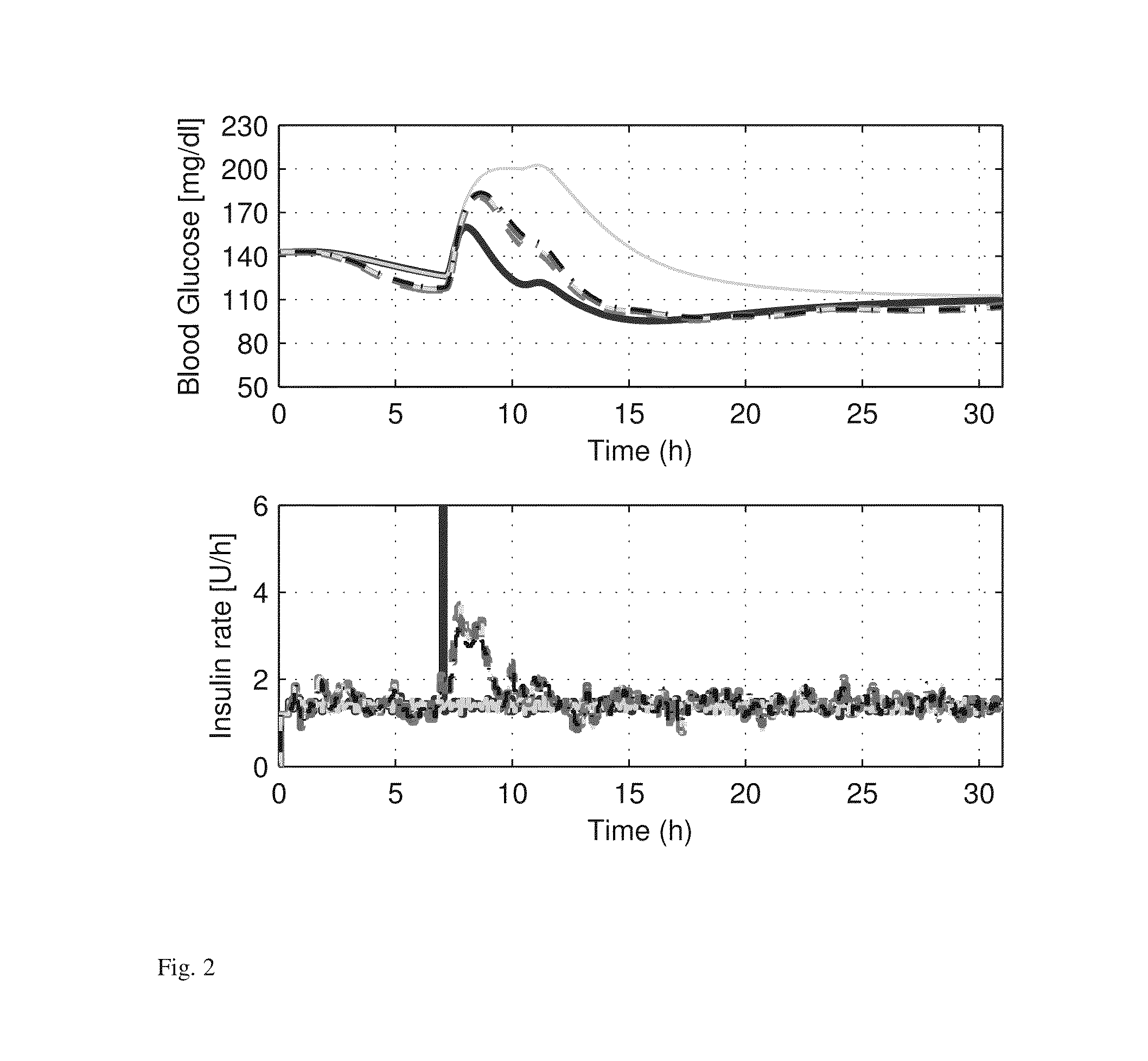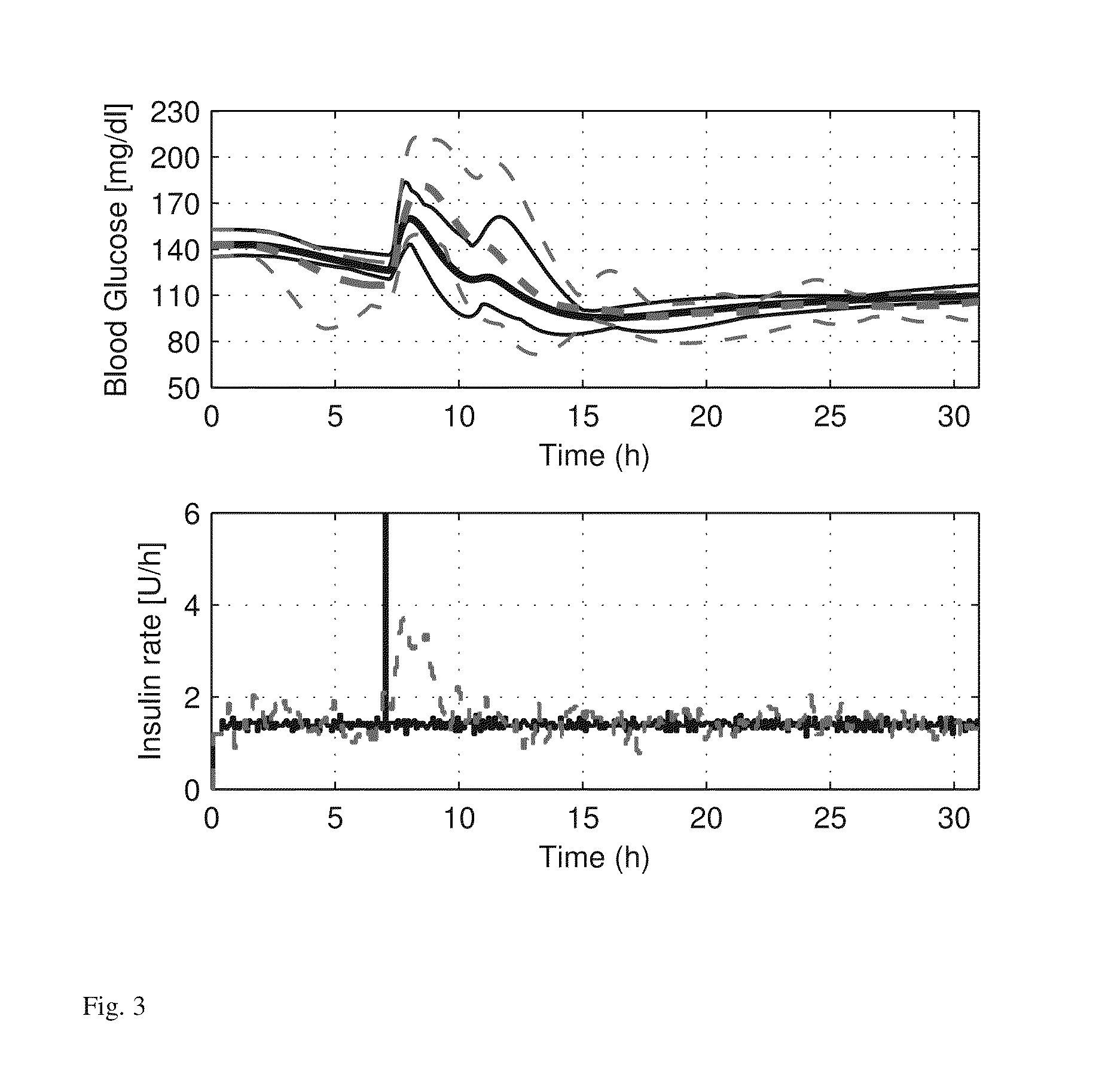Model-Based Personalization Scheme of an Artificial Pancreas for Type I Diabetes Applications
a type i diabetes and artificial pancreas technology, applied in the field of model-based personalization schemes of artificial pancreas for type i diabetes applications, can solve the problems of inducing hypoglycemic risk in subjects, limited performance of any algorithm, etc., and achieves wide variations in insulin sensitivity, long time delays, and the effect of inducing hypoglycemic risk
- Summary
- Abstract
- Description
- Claims
- Application Information
AI Technical Summary
Benefits of technology
Problems solved by technology
Method used
Image
Examples
Embodiment Construction
[0022]Control Specifications
[0023]Controllers are assessed as a part of an AP system that utilizes noise-free and noise-included blood glucose measurements and continuous subcutaneous insulin injections. The system is incorporated as a part of a ten subject study using the Food and Drug Administration (FDA) accepted University of Virginia and Padova (UVA / Padova) metabolic simulator [17]. The control sampling period are set to 5 minutes. An unannounced meal is used to challenge the system without prior insulin bolus (feedforward action) to counteract the meal. The control system is evaluated by its performance in
[0024]1) minimizing the postprandial blood glucose concentration peak;
[0025]2) maximizing the time the subject's blood glucose concentration remains within the euglycemic zone (approximately 80-140 mg / dl) [18]; and
[0026]3) minimizing the time the subject's blood glucose concentration spends below the target zone (approximately 70-180 mg / dl) [18].
[0027]A controller that is imp...
PUM
 Login to View More
Login to View More Abstract
Description
Claims
Application Information
 Login to View More
Login to View More - R&D
- Intellectual Property
- Life Sciences
- Materials
- Tech Scout
- Unparalleled Data Quality
- Higher Quality Content
- 60% Fewer Hallucinations
Browse by: Latest US Patents, China's latest patents, Technical Efficacy Thesaurus, Application Domain, Technology Topic, Popular Technical Reports.
© 2025 PatSnap. All rights reserved.Legal|Privacy policy|Modern Slavery Act Transparency Statement|Sitemap|About US| Contact US: help@patsnap.com



